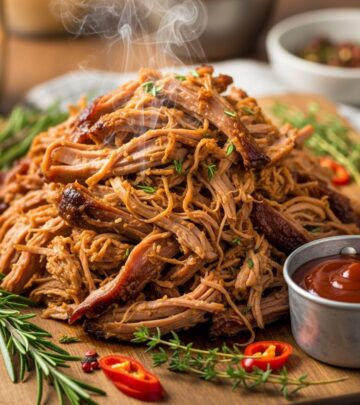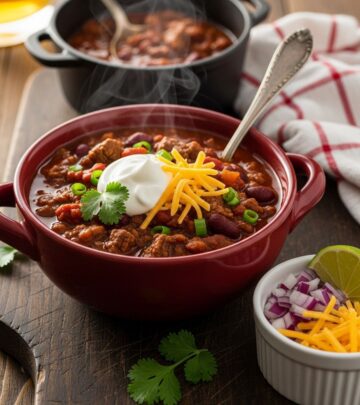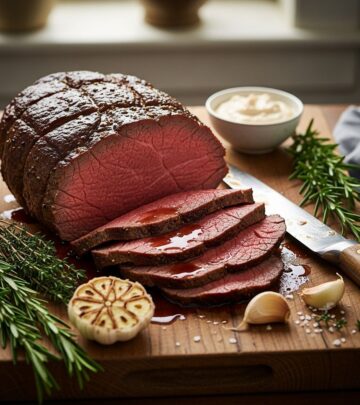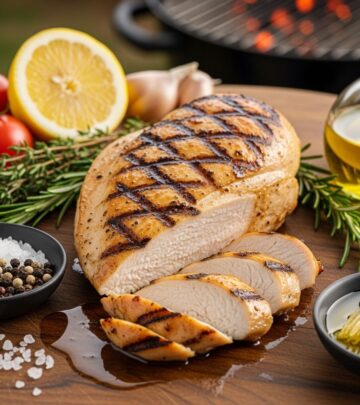The Ultimate Guide to Kitchen Storage and Organization Essentials
Transform cramped counters into efficient zones tailored to your daily cooking routine.

Keeping your kitchen organized isn’t just about aesthetics—it’s about creating a functional space that makes cooking, cleaning, and even entertaining as enjoyable as possible. This comprehensive guide covers the tips, tools, and strategies you need to streamline your kitchen, minimize clutter, and maximize every inch of space, no matter your kitchen’s size or layout. Whether you’re a culinary enthusiast or just seeking a simpler daily routine, these kitchen storage and organization essentials will transform your home’s busiest room.
Why Kitchen Organization Matters
A well-organized kitchen saves time, minimizes stress, and encourages productive, pleasurable cooking. Every item has a home, mess and redundancy are eliminated, and maintaining cleanliness becomes simple. Ultimately, an organized kitchen means you can spend less energy looking for tools and more time enjoying meals with family and friends.
Step 1: Take Inventory and Declutter
Before purchasing organizational products or rearranging shelves, start with a full inventory of what you own. This is the foundation for a functional kitchen.
- Remove Everything: Empty cabinets, drawers, shelves, pantry cupboards, and even the fridge.
- Sort and Edit: Categorize items—food, cookware, utensils, gadgets—and be honest about duplicates or little-used pieces.
- Declutter: Donate, discard, or recycle anything unfamiliar, expired, or never used. This step clears valuable space and prevents future clutter.
Tip: Decluttering just once a year can keep your kitchen streamlined and pleasant to use.
Step 2: Categorize and Zone Your Kitchen
Effective organization goes beyond placing items neatly back on shelves—it’s about zoning your kitchen for efficiency. Different tasks need different areas and tools; organize accordingly.
- Food Prep Zone: Cutting boards, knives, mixing bowls, and prep tools close to work surfaces.
- Cooking Zone: Pots and pans near the stove, utensils, oils, and frequently used spices within arm’s reach.
- Cleanup Zone: Dishes, sink-side scrubbers, dish soap, and towels near the sink and dishwasher.
- Baking Zone (optional): Baking sheets, mixing bowls, measuring cups, and the stand mixer in a cluster.
Assigning each category to a specific area not only tightens up daily routines but also makes it easier for others to help in the kitchen.
Step 3: Organize the Pantry
Pantry organization is crucial—when staples are easy to find, you waste less and cook more confidently.
- Categorize Food Types: Group like items, such as grains, canned goods, snacks, baking supplies, and spices.
- Shelf Placement: Store everyday items at eye level. Reserve high shelves for infrequently used ingredients and low shelves for heavy, bulky items.
- Clear Containers: Use airtight, clear containers to hold bulk ingredients like flour, rice, and pasta. They help prevent pests and make it easy to gauge supply at a glance.
- Labels: Label each container or shelf to make restocking and finding items effortless.
- Lazy Susans: Place turntables in corners to keep oils, vinegars, or small jars accessible and visible.
- Backstock Area: Reserve a space for duplicates or excess goods so everyday ingredients don’t get crowded out.
Step 4: Maximize Cabinet and Drawer Space
Cabinets and drawers can quickly become catch-alls. Smart storage solutions keep everything accessible and prevent the dreaded avalanche of pots or Tupperware.
- Drawer Dividers: Use for utensils, gadgets, and even cutting boards to make grabbing items simple and orderly.
- Shelf Risers: Double your vertical storage in cabinets by stacking plates, bowls, or pantry goods without piling them haphazardly.
- Pull-Out Shelves: Transform deep cabinets with pull-out trays, so nothing gets lost or forgotten at the back.
- Door Organizers: Install racks or hooks on the backs of cabinet doors for pot lids, wraps, or small, light items.
- Vertical Organizers: Store baking sheets, cutting boards, and trays upright rather than flat to save space and increase visibility.
- Baskets and Bins: Corral messy categories—like snacks or food storage containers—by grouping them in bins.
- Hooks: Add inside doors or beneath cabinets for hanging mitts, tools, or even mugs.
Step 5: Refrigerator and Freezer Organization
Organizing the fridge and freezer means less food waste and quicker meal prep.
- Group Items by Category: Dairy, deli, leftovers, beverages, meats, and produce should each have a home.
- Use Clear Bins: Bins make it easy to pull out a whole category for snack time or meal prep.
- Designate Zones: Keep raw meat on the bottom shelf in a dedicated bin to prevent drips and cross-contamination.
- Adjustable Shelves: Make space for taller bottles or leftovers by moving shelves as needed.
- Door Shelves: Store condiments, pickles, and jars (the least perishable items) here.
- Label Leftovers: Date and label to reduce lost or spoiled food.
- Rotation: Regularly rotate foods so the oldest gets used first and nothing lingers unseen.
Step 6: Smart Layout—Design for Flow
The layout of your kitchen impacts both storage and workflow. A few strategic moves can drastically improve efficiency:
- Zone Placement: Keep prep, cooking, and cleanup items as close as possible to their points of use. For example, store spatulas and oils near the oven or range.
- Common-Sense Proximity: Plates near the dishwasher, coffee mugs next to the coffee machine, mixing bowls by the prep area.
- Rolling Carts or Islands: If space is tight, add portable storage for more prep surface or additional drawers.
- Wall-mounted Solutions: Use wall space for floating shelves, magnetic knife strips, and hanging rails to free up counters and drawers.
Remember: A kitchen that flows not only feels bigger but also makes every mealtime smoother.
Step 7: Must-Have Organization Tools and Products
The right tools make a world of difference. Here are foundational products found in the best-organized kitchens:
- Drawer dividers for utensils and gadgets
- Shelf risers for cabinets and pantries
- Clear storage containers (with labels)
- Lazy Susans for oils and condiments
- Pull-out drawer units or trays for deep cabinets
- Wire baskets or bins for grouping food and supplies
- Hooks and wall-mounted racks for tools, mugs, or towels
- Vertical lid holders for pot and pan covers
Not every product suits every kitchen—prioritize what addresses your specific clutter and storage challenges.
Step 8: Storage Hacks for Small Kitchens
Even the smallest kitchens can offer ample storage with a few creative solutions:
- Use the Vertical: Add shelves or hanging racks to empty wall space, mount spice racks on cabinet doors, or install pegboards for tools.
- Overhead Storage: High shelves can hold rarely used appliances, baking gear, or pantry backstock.
- Back-of-Door Space: Baskets and hooks mounted on pantry or cabinet doors add hidden storage for spices, wraps, or cleaning supplies.
- Stack and Nest: Stackable containers, nesting bowls, and collapsible colanders pack away tidily.
- Magnetic Solutions: Magnetic strips or racks can store knives, small jars, or tools on unused wall space.
Step 9: Maintain and Refresh
Kitchen organization is not a one-time event; maintenance is crucial. Schedule periodic reviews—monthly or quarterly—to:
- Clear out expired food and old leftovers
- Re-organize drawers and cabinets after major cooking projects or holidays
- Refresh labels or replace containers as needed
- Donate unused or duplicate gadgets or cookware
Adapting your system as your needs change keeps your kitchen functional and stress-free.
Sample Organization Table: Kitchen Zones and Recommended Storage Strategies
| Kitchen Zone | Recommended Storage | Key Tools |
|---|---|---|
| Prep Area | Counter-adjacent drawers, clear bins | Drawer dividers, cutting board rack |
| Cooking Area | Cabinets near stove/oven | Pot lid organizer, utensil crock |
| Pantry | Open shelving, air-tight containers | Labels, baskets, Lazy Susan |
| Cleanup Zone | Sink-side shelves or carts | Soap caddy, drying rack |
| Fridge | Adjustable shelves, clear bins | Stackable bins, shelf liners |
Frequently Asked Questions (FAQ)
Q: How can I add more storage to my tiny kitchen?
A: Use vertical space—install shelves above counters or over doors, utilize wall-mounted racks for pots and utensils, and add pull-out drawers or baskets inside cabinets for extra room.
Q: What are the essential products for kitchen organization?
A: Clear storage containers, drawer dividers, shelf risers, pull-out trays, labels, and baskets can make organizing much easier and keep items accessible.
Q: How should I organize my fridge and freezer for maximum efficiency?
A: Group items by category, put oldest at the front, use clear bins for snacks and produce, and store meat on the bottom shelf to prevent cross-contamination. Label everything and review contents regularly.
Q: Are there any quick hacks to make cabinets more useful?
A: Add pull-out drawers, door-mounted racks for lids or spices, use shelf risers for double-level storage, and arrange pans and trays upright for instant access.
Q: How often should I reorganize my kitchen?
A: A quick review every month helps prevent clutter, while a full reorganization once or twice a year ensures systems stay in place and your kitchen remains functional as your needs change.
Summary of Key Tips
- Declutter first—keep only what you use and love.
- Zone your kitchen for prep, cooking, and cleanup.
- Invest in versatile organizers like clear containers, risers, and drawer dividers.
- Maximize vertical and hidden spaces—shelves, behind doors, and underneath cabinets.
- Regularly reassess your organization system to adapt to new habits and needs.
With these kitchen storage and organization essentials, you’ll create a more efficient, enjoyable, and stress-free kitchen environment, no matter your cooking style or space limitations.
References
- https://www.mystackbox.com/ultimate-kitchen-storage-guide-maximizing-your-space/
- https://www.thecabinetcenter.com/blog/kitchen-organization-101-a-beginners-guide
- https://suzettegebhardt.com/planning-an-organized-kitchen/
- https://www.youtube.com/watch?v=MhQCvS2oe1w
- https://designthusiasm.com/kitchen-organization-storage/
- https://studio-mcgee.com/our-kitchen-organization-essentials/
Read full bio of Sneha Tete












